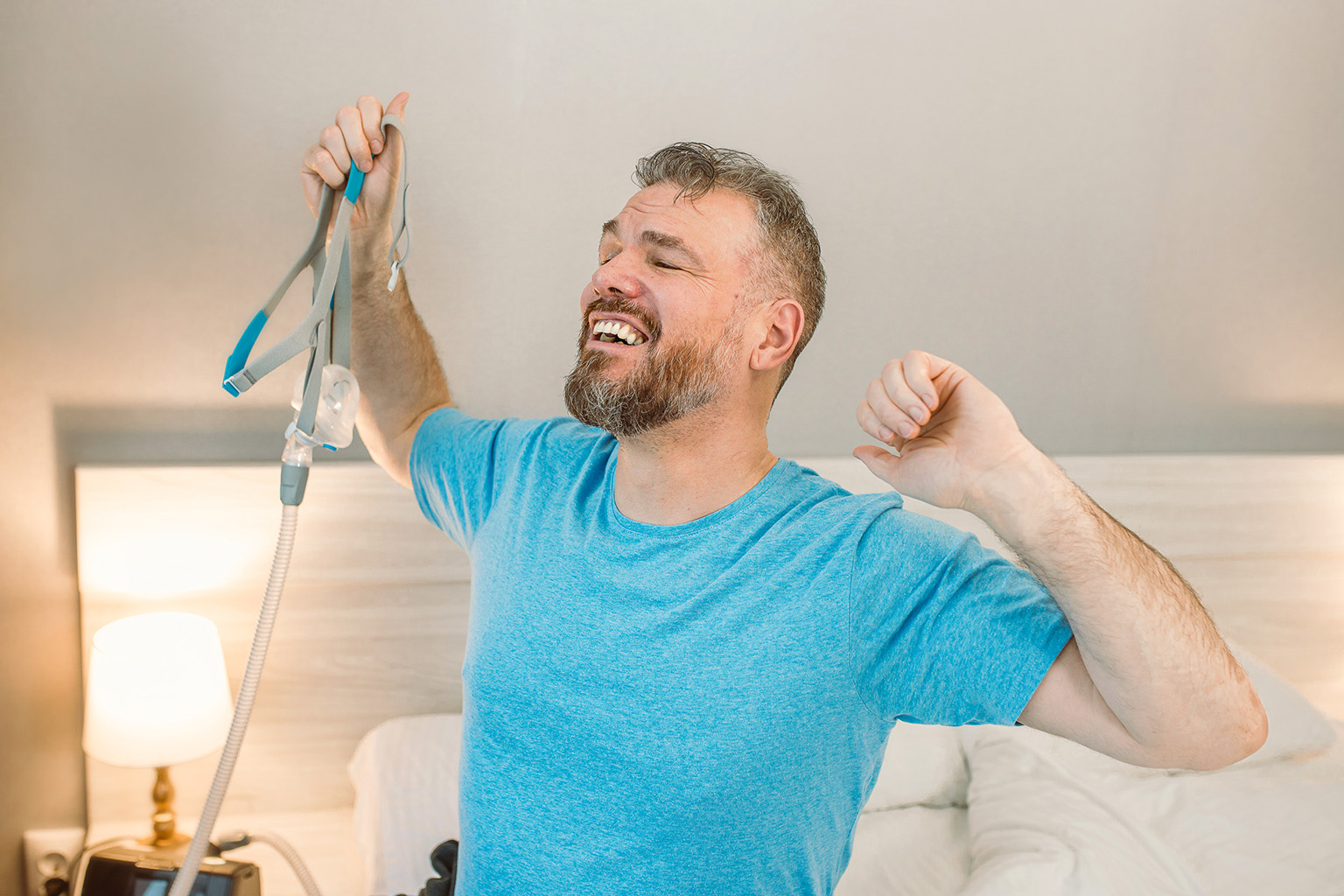Sleep apnea, a condition that interrupts breathing during sleep, not only disrupts your nightly rest but also carries significant long-term health implications. For individuals grappling with this condition, understanding its effects and how to manage it can be life-changing. This blog dives into the critical aspects of sleep apnea, including its impact on life expectancy, optimal sleep positions, and factors that exacerbate the condition, providing you with essential knowledge to improve your sleep quality and overall health.
 What is the Life Expectancy of Someone with Sleep Apnea?
What is the Life Expectancy of Someone with Sleep Apnea?
Sleep apnea poses serious health risks that can affect overall life expectancy. Research indicates that untreated sleep apnea can lead to a range of complications, including high blood pressure, heart disease, stroke, and diabetes. People with severe, untreated sleep apnea are more likely to have a reduced life expectancy due to these associated health issues. However, the good news is that with proper treatment and management, individuals with sleep apnea can lead a healthy life, comparable to those without the condition. Early diagnosis and intervention are key to preventing the long-term consequences of sleep apnea and maintaining a good quality of life.
 What Sleep Position is Best for Sleep Apnea?
What Sleep Position is Best for Sleep Apnea?
The way you sleep can significantly impact the severity of sleep apnea symptoms, making it crucial to find the position that best supports uninterrupted breathing throughout the night. The best sleep position for managing sleep apnea is generally on your side. Specifically, sleeping on your left side can prove particularly beneficial. This position promotes better circulation and can prevent the tongue and soft palate from collapsing into the back of the throat, which reduces the risk of obstructed airways and breathing interruptions.
Sleeping on your side has the added advantage of minimizing the gravitational force on your throat muscles, further alleviating the likelihood of airway blockages. For individuals with positional sleep apnea, where symptoms worsen in certain postures, side sleeping can be a simple yet effective remedy. It’s worth experimenting with different side positions to find the one that best reduces symptoms, as individual anatomy and comfort preferences can influence effectiveness.
Conversely, back sleeping is often discouraged for people with sleep apnea. In this position, gravity can cause the lower jaw and tongue to fall backward, narrowing the airway and increasing the frequency of apnea events. This posture is particularly problematic for individuals with obesity or excessive soft tissue around the neck and throat, as it exacerbates the risk of airway collapse.
For some, however, side sleeping may not be sufficient or comfortable due to other health issues like shoulder pain or acid reflux. In these cases, elevating the head of the bed can be a beneficial alternative. Using a wedge pillow or an adjustable bed base to raise the upper body by 30 to 45 degrees helps keep the airways open by aligning the head and neck properly and preventing the tongue from blocking the throat. Additionally, the use of specially designed sleep apnea pillows, which are contoured to support the neck and keep the airway open, can make a significant difference in sleep quality and symptom reduction.
Understanding and optimizing your sleep position can be a key component of managing sleep apnea effectively. While side sleeping is generally recommended, individual needs may vary, and adjustments should be made to ensure the most restful and uninterrupted sleep possible. Consulting with a sleep specialist or a dentist experienced in sleep apnea can provide personalized recommendations and solutions tailored to your specific condition and lifestyle.
 What Aggravates Sleep Apnea?
What Aggravates Sleep Apnea?
Numerous factors can exacerbate sleep apnea symptoms, making the condition more severe and challenging to manage. Obesity stands out as a significant contributor; excess body weight, especially around the neck and upper body, can place undue pressure on the throat muscles and airway. This increased pressure can lead to a higher likelihood of airway obstruction during sleep, causing more frequent and severe apnea episodes. The distribution of body fat in individuals with obesity often contributes to a narrowed airway, making it easier to collapse during the relaxation of sleep.
Alcohol consumption and the use of sedatives or muscle relaxants are other notable aggravators. These substances can overly relax the muscles in the throat and jaw, reducing the natural defense against airway closure. The relaxation of these muscles during sleep can lead to an increased number of apneic events and can significantly worsen the quality of sleep. Moreover, alcohol can alter sleep architecture, reducing the amount of restorative deep sleep and REM sleep, which are crucial for overall health and well-being.
Smoking is a well-documented risk factor for many respiratory conditions, including sleep apnea. It can cause inflammation and fluid retention in the airway, leading to a narrower airway and increased difficulty in keeping it open during sleep. Long-term smoking can also lead to lung damage and reduced lung function, compounding the challenges of maintaining adequate oxygen levels during sleep for those with sleep apnea.
Nasal congestion and sinus issues can also play a significant role in aggravating sleep apnea. Conditions that obstruct the nasal passages, such as chronic sinusitis, allergies, or a deviated septum, can make it more difficult to breathe through the nose during sleep. This difficulty can force individuals to breathe through their mouth, which may increase the likelihood of airway collapse.
Furthermore, endocrine disorders like hypothyroidism and acromegaly can affect muscle tone and soft tissue volume in the airway, increasing the risk of sleep apnea. Menopause is another condition that can affect sleep apnea risk due to hormonal changes that influence muscle tone and fat distribution, particularly in the neck and airway.
A naturally narrow airway, large tonsils, or adenoids can also contribute to sleep apnea by physically limiting airflow during sleep, even in the absence of other risk factors. In children, enlarged tonsils and adenoids are a common cause of obstructive sleep apnea and may necessitate surgical intervention.
Understanding and addressing these aggravators is crucial in managing sleep apnea. Lifestyle changes, such as weight loss, reducing alcohol consumption, quitting smoking, and treating nasal congestion, can significantly improve sleep apnea symptoms and overall sleep quality. For those with anatomical challenges, such as a narrow airway, large tonsils, or deviated septum, medical or surgical interventions may be necessary to alleviate the condition effectively. Regular follow-ups with healthcare providers, including dentists who specialize in sleep apnea management, are essential to monitor the condition and adjust treatment strategies as needed.
 Embrace a Restful Night: Your Journey to Better Sleep Begins Here
Embrace a Restful Night: Your Journey to Better Sleep Begins Here
Sleep apnea doesn’t just affect your sleep; it impacts your overall health and well-being. At Encino Dental Studio, we understand the complexities of sleep-related breathing disorders and their connection to dental health. Our expert team is equipped to help diagnose and manage sleep apnea, ensuring you achieve the restful sleep you deserve.
Don’t let sleep apnea control your life. Schedule an appointment with us today, and take the first step towards a healthier, more restful night. Your journey to better sleep and improved health is just a phone call away.







